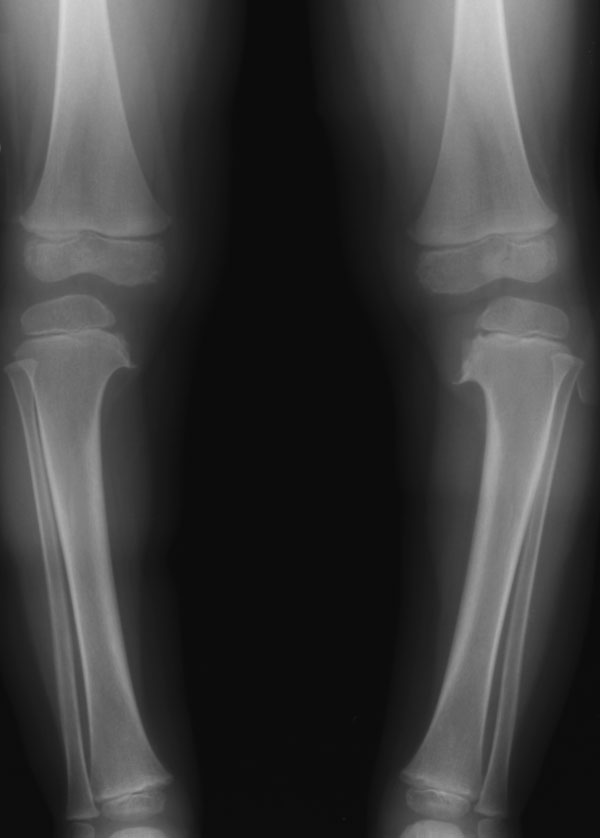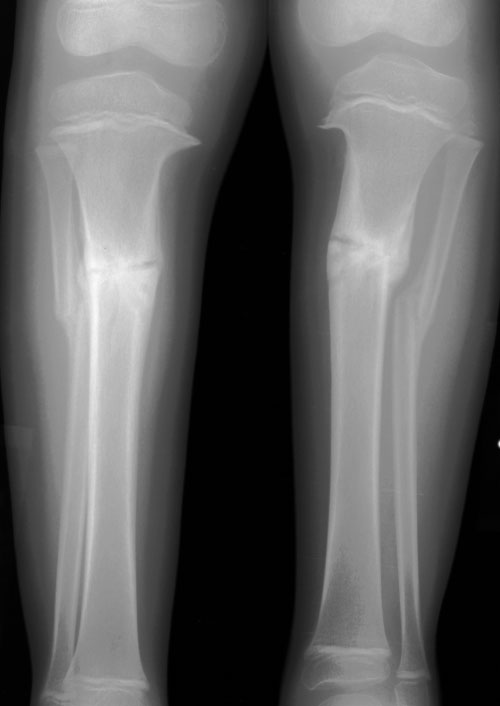Pediatric Radiology > Musculoskeletal > Constitutional Disorders of Bone > Blount Disease
Blount Disease
![]()
|
Blount disease is a growth deformity of the medial proximal tibia resulting in excessive medial bowing of the lower extremities (tibia vara). It is an idiopathic condition but may occur secondary to abnormal enchondral ossification from excess stress and compression. It is more common in obese children. The disease can be unilateral or bilateral. There are two types: 1) infantile form (presents at 1-3 years of age) and 2) juvenile form (presents at 6-13 years of age). Radiographic findings:
This condition can be distinguished from physiologic bowing of the tibia by the severity of the bowing as well as the degree of irregularity of the medial tibial metaphysis. Severe cases may require tibial osteotomies for treatment. |
|

|
Blount Disease in a 2-year-old female. AP radiograph (standing) demonstrates deformity of both lower extremities, left worse than right. Also note the beaking, irregularity and fragmentation of the medial tibial metaphyses. |
 |
Blount disease in a 4-year-old female. AP radiograph shows depression, beaking, and irregularity of the medial tibial metaphyses. Note that this patient is s/p bilateral osteotomies to correct the resultant tibial and fibular bowing. |